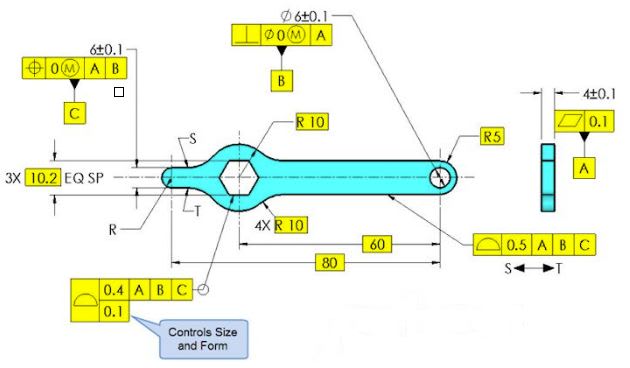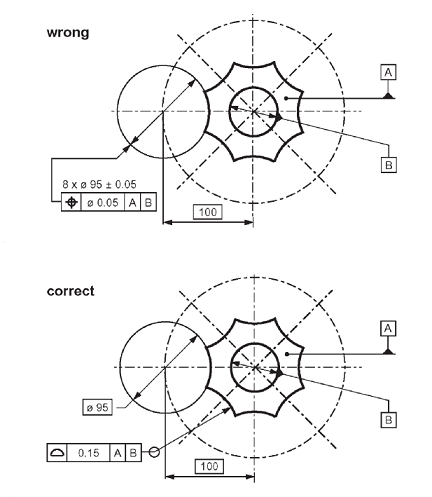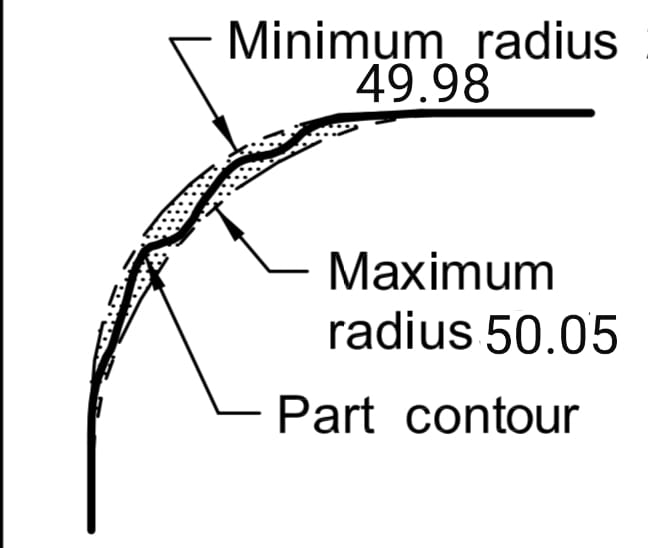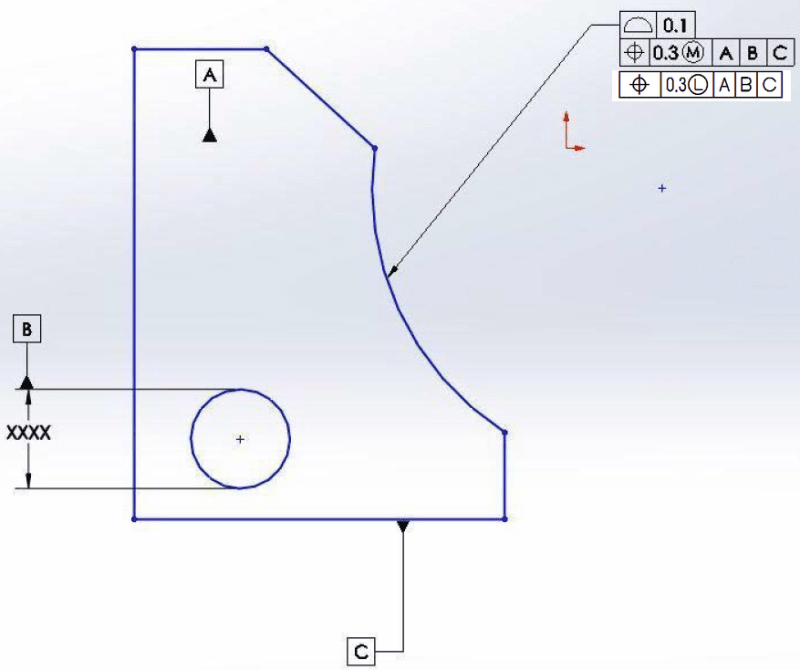pmarc,
Regardless of the UAME/FOS issue:
You didn't want to add another sub topic, but since it's already there, i'd like to add my 2 cents on it too
![[smile] [smile] [smile]](/data/assets/smilies/smile.gif)
.
pmarc said:
I would really like to avoid adding another side topic to the discussion, but the (sad) fact is that even for a simple arc like you showed, the standard does not really offer any interpretation of what the actual size of the arc really is. The surface of the arc must lie inside a crescent-shaped tolerance zone, but inside that zone all kinds of different things can happen. The actual arc can be a a collection of multiple smooth portions with curvatures of totally different radii than defined by the drawing limits. The actual arc surface can be full of flats and/or reversals for which there might be dozens of different local radius values or for which it might not even be possible to determine any radius.
I totally agree with that. If i was to measure a radius like that, specified by "R...+-..." in the drawing, i would not know what to fill in the inspection report, if i wanted to go strictly by the standard.
I would fill in the value of the inscribed radius by the extremities (50.05 in my illustration) because this is how they do the measurement on an optical comparator at my workplace - but theoretically speaking, that is only the maximum-end limit of the as-produced tolerance zone of the radius.
However, i think that for cases where an actual fair form and determinable radius are important, the standard offers the "Controlled Radius" (CR) specification.
If i'm not missing something this is also only a partial solution, because the tolerance zone is still crescent-shaped, the produced radius within it is supposed to be this time as close as possible to perfect circular form, but nothing indicates exactly
how close it should be to it.
What the standard does mention in this context is: "It is recommended that the CR be further defined with an engineering control specification."(para 2.15.2) I'm not sure what that engineering control could be, but if it is proposed to use a profile control, it requires a basic radius, which will eliminate the possibility to use the direct "CR...+-..." specification in the first place
![[ponder] [ponder] [ponder]](/data/assets/smilies/ponder.gif)
*Edited because of poor english




![[wink] [wink] [wink]](/data/assets/smilies/wink.gif) :
:

![[smile] [smile] [smile]](/data/assets/smilies/smile.gif) .
.![[ponder] [ponder] [ponder]](/data/assets/smilies/ponder.gif)